Themed collection Energy Frontiers: Electrochemistry and Electrochemical Engineering

Metal organic framework-based nanostructure materials: applications for non-lithium ion battery electrodes
Non-lithium ion (e.g., Al3+, Ca2+, K+, Mg2+, Na+, and Zn2+) batteries have emerged as a promising platform for next-generation energy storage systems.
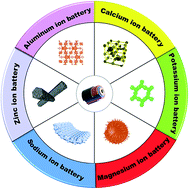
CrystEngComm, 2022,24, 2925-2947
https://doi.org/10.1039/D1CE01737C
Ammonia as a carbon-free hydrogen carrier for fuel cells: a perspective
The potential of utilizing ammonia as a hydrogen carrier for on-site power generation via ammonia decomposition is systematically discussed.
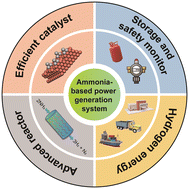
Ind. Chem. Mater., 2023,1, 332-342
https://doi.org/10.1039/D3IM00036B
Strategies towards enabling lithium metal in batteries: interphases and electrodes
Perspective on recent improvements in experiment and theory towards realizing lithium metal electrodes with liquid electrolytes.
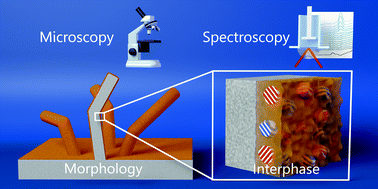
Energy Environ. Sci., 2021,14, 5289-5314
https://doi.org/10.1039/D1EE00767J
Recent progress in high-loading single-atom catalysts and their applications
Achieving single-atom dispersion of metal active components remains daunting. Here, we summarized several key synthesis methods and applications of high-loading SACs, hoping to highlight important research areas for future development.

Ind. Chem. Mater., 2023,1, 486-500
https://doi.org/10.1039/D3IM00062A
Cutting-edge methods for amplifying the oxygen evolution reaction during seawater electrolysis: a brief synopsis
Three approaches for enhancing OER activity and selectivity for hydrogen production in seawater electrolysis.
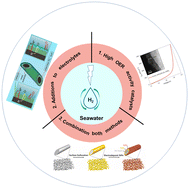
Ind. Chem. Mater., 2023,1, 475-485
https://doi.org/10.1039/D3IM00071K
Understanding the charging of supercapacitors by electrochemical quartz crystal microbalance
Supercapacitors are highly valued energy storage devices and it's crucial to understand their charging mechanism. We present a comprehensive discussion on the applications of EQCM in the supercapacitor community.
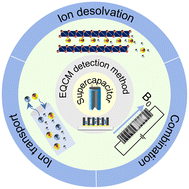
Ind. Chem. Mater., 2023,1, 175-187
https://doi.org/10.1039/D2IM00038E
Multicomponent catalyst design for CO2/N2/NOx electroreduction
The recent progress in multicomponent catalyst design for CO2/N2/NOx electroreduction is summarized from three models.
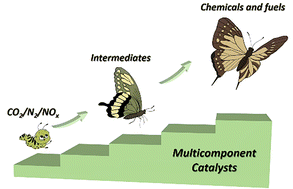
Ind. Chem. Mater., 2023,1, 93-105
https://doi.org/10.1039/D2IM00056C
Design of functional binders for high-specific-energy lithium-ion batteries: from molecular structure to electrode properties
This review systematically summarizes the research progress of functional binders in lithium-ion batteries and elucidates the main functions of advanced binders to deal with the challenges of high-specific-energy electrodes.

Ind. Chem. Mater., 2024,2, 191-225
https://doi.org/10.1039/D3IM00089C
Lithium-mediated electrochemical dinitrogen reduction reaction
This review discusses the recent advances in the field of the Li-mediated electrocatalytic dinitrogen reduction reaction along with the latest insights into the proposed catalytic mechanisms, electrocatalysts, and electrolytes.
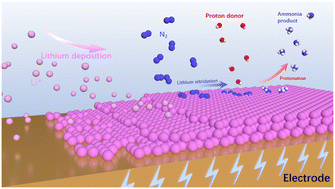
Ind. Chem. Mater., 2023,1, 563-581
https://doi.org/10.1039/D3IM00006K
Recent progress of manganese dioxide based electrocatalysts for the oxygen evolution reaction
This review discusses the OER reaction mechanism (AEM and LOM) and the research progress of MnO2-based OER catalysts. The optimization strategy of MnO2-based catalysts was summarized.
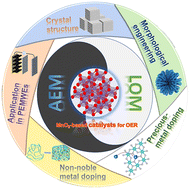
Ind. Chem. Mater., 2023,1, 312-331
https://doi.org/10.1039/D3IM00034F
Non-noble metals as activity sites for ORR catalysts in proton exchange membrane fuel cells (PEMFCs)
Proton exchange membrane fuel cells (PEMFCs) have great potential to become the next generation green energy technique, but its application is limited by the slow kinetics of the cathode oxygen reduction reaction (ORR) in acidic medium.
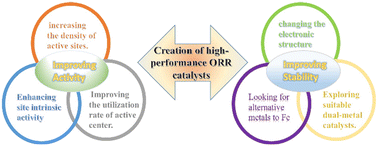
Ind. Chem. Mater., 2023,1, 388-409
https://doi.org/10.1039/D3IM00002H
Electrochemical CO2 reduction with ionic liquids: review and evaluation
Evaluation for electrochemical CO2 reduction to C1 with Ionic liquids.
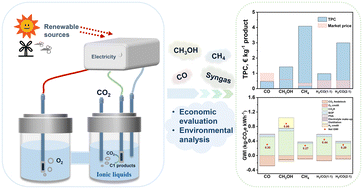
Ind. Chem. Mater., 2023,1, 410-430
https://doi.org/10.1039/D2IM00055E
Recent progress in metal–organic frameworks (MOFs) for electrocatalysis
Recent progress of metal–organic framework (MOF) based catalysts in the electrocatalytic hydrogen evolution reaction, hydrogen oxidation reaction, oxygen evolution reaction, oxygen reduction reaction and nitrogen reduction reaction is summarized.

Ind. Chem. Mater., 2023,1, 9-38
https://doi.org/10.1039/D2IM00063F
Ionic liquid/poly(ionic liquid)-based electrolytes for lithium batteries
Lithium batteries have received a lot of attention in recent years. This comment reviewed the application of ionic liquid and poly(ionic liquid)-based electrolytes in lithium batteries.

Ind. Chem. Mater., 2023,1, 39-59
https://doi.org/10.1039/D2IM00051B
Recent progress in non-fused ring electron acceptors for high performance organic solar cells
The recent progress in non-fused ring electron acceptor-based organic solar cells has been reviewed from the perspective of material design strategies.

Ind. Chem. Mater., 2023,1, 60-78
https://doi.org/10.1039/D2IM00037G
Recent progress in ZnCo2O4 and its composites for energy storage and conversion: a review
In this work, electrode materials based on ZnCo2O4 for the HER/OER/ORR and energy storage devices were reviewed considering their key multifunctional role in the way to a more sustainable society.
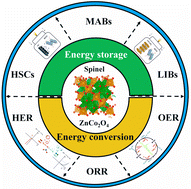
Energy Adv., 2022,1, 793-841
https://doi.org/10.1039/D2YA00106C
Inkjet 3D-printing of functional layers of solid oxide electrochemical reactors: a review
The review paper overviews principles of inkjet printing and ink formulation, subsequently a literature summary on inkjet-printed solid oxide electrochemical reactors printed with 2D and 3D structures, followed by challenges limiting the technique.
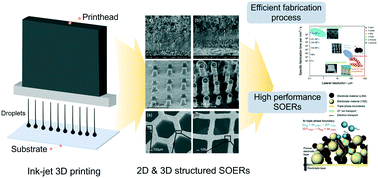
React. Chem. Eng., 2022,7, 1692-1712
https://doi.org/10.1039/D1RE00454A
Porous organic polymers for high-performance supercapacitors
This review summarizes recent advances and design strategies of porous organic polymers as efficient electrode materials for high-performance supercapacitors.
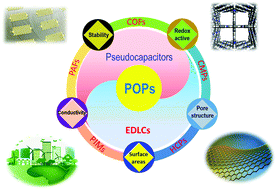
Chem. Soc. Rev., 2022,51, 3181-3225
https://doi.org/10.1039/D2CS00065B
Photoelectrochemical energy storage materials: design principles and functional devices towards direct solar to electrochemical energy storage
This review summarizes recent advances in photoelectrochemical energy storage materials and related devices for direct solar to electrochemical energy storage. Design principles, challenges and future developments are specifically highlighted.
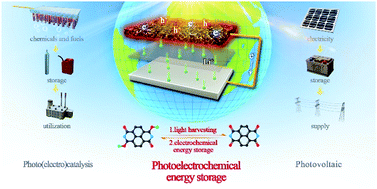
Chem. Soc. Rev., 2022,51, 1511-1528
https://doi.org/10.1039/D1CS00859E
Development of advanced electrolytes in Na-ion batteries: application of the Red Moon method for molecular structure design of the SEI layer
This review aims to overview state-of-the-art progress in the collaborative work between theoretical and experimental scientists to develop advanced electrolytes for Na-ion batteries (NIBs).
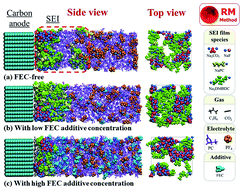
RSC Adv., 2022,12, 971-984
https://doi.org/10.1039/D1RA07333H
Regulation methods for the Zn/electrolyte interphase and the effectiveness evaluation in aqueous Zn-ion batteries
The working principles of interphase strategies to enhance Zn reversibility are discussed. The effectiveness evaluation techniques, including electrochemical methods, characterization measurements, and computational simulations, are proposed.
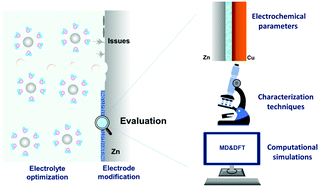
Energy Environ. Sci., 2021,14, 5669-5689
https://doi.org/10.1039/D1EE02021H
Decoupled electrochemical water-splitting systems: a review and perspective
Decoupled electrochemical water splitting systems separate the hydrogen- and oxygen-evolution reactions spatially, temporally, or both, resulting in modular, flexible, and intrinsically safe electrolysis.
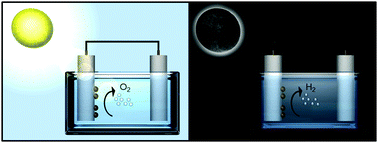
Energy Environ. Sci., 2021,14, 4740-4759
https://doi.org/10.1039/D1EE01226F
Perfecting electrocatalysts via imperfections: towards the large-scale deployment of water electrolysis technology
A tuned electronic structure favors the electrocatalytic water splitting reaction via accelerating the reaction kinetics, changing the rate-determining step, and optimizing the adsorption energy for intermediates; this is achieved via intentionally incorporating imperfections into the crystal lattices of electrocatalysts.
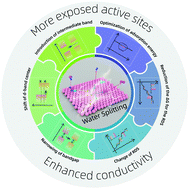
Energy Environ. Sci., 2021,14, 1722-1770
https://doi.org/10.1039/D0EE03635H
Biomass-based materials for green lithium secondary batteries
This review summarizes the employment of different biomass materials for green lithium secondary batteries.
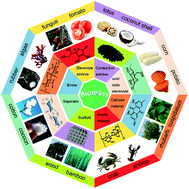
Energy Environ. Sci., 2021,14, 1326-1379
https://doi.org/10.1039/D0EE02848G
Metal–organic frameworks and their derivatives as electrocatalysts for the oxygen evolution reaction
This review summarizes the recent progress on MOFs and their derivatives used for OER electrocatalysis in terms of their morphology, composition and structure–performance relationship.

Chem. Soc. Rev., 2021,50, 2663-2695
https://doi.org/10.1039/D0CS01191F
Carbon materials for ion-intercalation involved rechargeable battery technologies
The development of carbon electrode materials for rechargeable batteries is reviewed from the perspective of structural features, electrochemistry, and devices.
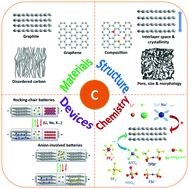
Chem. Soc. Rev., 2021,50, 2388-2443
https://doi.org/10.1039/D0CS00187B
Design of hollow carbon-based materials derived from metal–organic frameworks for electrocatalysis and electrochemical energy storage
Hollow carbon-based materials derived from metal–organic frameworks for electrocatalysis and electrochemical energy storage are summarized and evaluated.
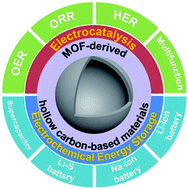
J. Mater. Chem. A, 2021,9, 3880-3917
https://doi.org/10.1039/D0TA10666F
Recent advances in highly active nanostructured NiFe LDH catalyst for electrochemical water splitting
The progress in the design strategies and synthetic mechanisms for each class of NiFe LDH electrocatalysts as well as the key trends in structural characterizations in catalyzing the water splitting process are discussed.
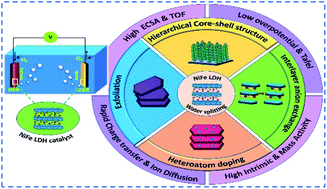
J. Mater. Chem. A, 2021,9, 3180-3208
https://doi.org/10.1039/D0TA10712C
Glyme-based electrolytes: suitable solutions for next-generation lithium batteries
Glymes are possible electrolyte solvents for high-energy lithium battery. Relevant results gathered over twenty years on these electrolytes are reviewed, and approaches to achieve new cells using insertion or conversion cathodes are discussed.

Green Chem., 2022,24, 1021-1048
https://doi.org/10.1039/D1GC03996B
Robotic cell assembly to accelerate battery research
Demonstration of the first robotic battery assembly system for academia that offers superhuman reproducibility and full data lineage tracking.
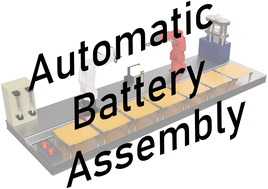
Digital Discovery, 2022,1, 755-762
https://doi.org/10.1039/D2DD00046F
Conductive Co-triazole metal-organic framework exploited as an oxygen evolution electrocatalyst
Co-triazole MOF achieved via a facile microwave synthesis providing abundant catalytic sites and intrinsic electrical conductivity can efficiently catalyze the reaction at a low overpotential with fast kinetics towards the oxygen evolution reaction.
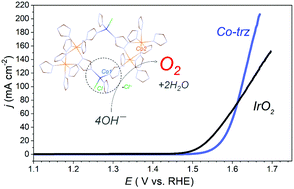
Chem. Commun., 2022,58, 7124-7127
https://doi.org/10.1039/D2CC02526D
Heterostructured Bi–Cu2S nanocrystals for efficient CO2 electroreduction to formate
We report the proof-of-concept design of interfacial sites with a selectivity-governing and hydrogen evolution reaction-suppressing domain (Bi) and an electrokinetic-promoting domain (Cu2S) for efficient CO2 electroreduction to formate.
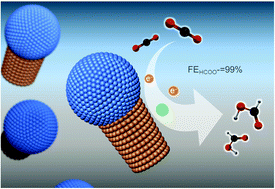
Nanoscale Horiz., 2022,7, 508-514
https://doi.org/10.1039/D1NH00661D
Coupling denitrification and ammonia synthesis via selective electrochemical reduction of nitric oxide over Fe2O3 nanorods
Fe2O3/CP acts as an electrocatalyst enabling efficient NH3 generation via NO reduction, capable of attaining a faradaic efficiency of 86.73% and an NH3 yield of 78.02 μmol h−1 cm−2. The Fe2O3-based Zn–NO battery offers a power density of 1.18 mW cm−2.
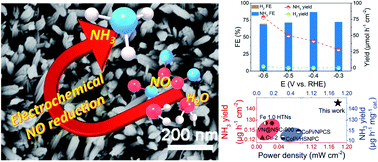
J. Mater. Chem. A, 2022,10, 6454-6462
https://doi.org/10.1039/D2TA00744D
Protonating imine sites of polyaniline for aqueous zinc batteries
The redox transitions of PANI are activated via a simple protonation strategy, during which the non-conductive –N![[double bond, length as m-dash]](https://www.rsc.org/images/entities/char_e001.gif) sites on the polymer chains are converted to the highly conductive polarons (–NH+–).
sites on the polymer chains are converted to the highly conductive polarons (–NH+–).
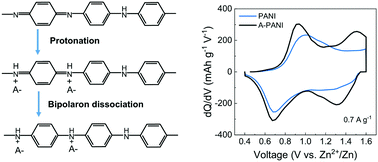
Chem. Commun., 2022,58, 1693-1696
https://doi.org/10.1039/D1CC06668D
Enhanced reversibility and electrochemical window of Zn-ion batteries with an acetonitrile/water-in-salt electrolyte
An acetonitrile/water-in-salt (AWIS) hybrid electrolyte suppressed Zn dendrite formation, prolonged the lifetime of the Zn anode, and extended the working voltage window of Zn–MnO2 batteries from 1.8 V to 2.2 V.
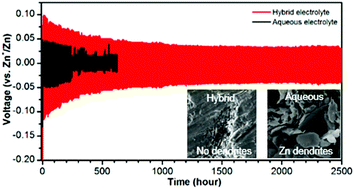
Chem. Commun., 2021,57, 1246-1249
https://doi.org/10.1039/D0CC06076C
Towards a high MnO2 loading and gravimetric capacity from proton-coupled Mn4+/Mn2+ reactions using a 3D free-standing conducting scaffold
The study demonstrates that electrospun CNFs are excellent substrates for reversible Mn4+/Mn2+ reactions in a mild buffered aqueous electrolyte with high mMnO2/mCNF ratio and gravimetric capacity.
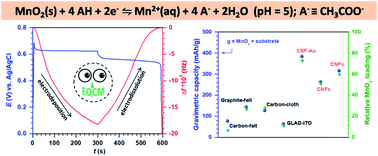
J. Mater. Chem. A, 2021,9, 1500-1506
https://doi.org/10.1039/D0TA10685B
A magnetron sputtered Mo3Si thin film: an efficient electrocatalyst for N2 reduction under ambient conditions
Mo3Si is a superior catalyst for electrochemical N2 reduction in 0.1 M Na2SO4, offering a large NH3 yield of 2 × 10−10 mol s−1 cm−2 and a high Faraday efficiency of 6.69% at −0.4 V and −0.3 V vs. a reversible hydrogen electrode, respectively.
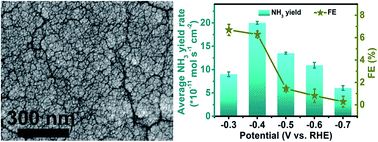
J. Mater. Chem. A, 2021,9, 884-888
https://doi.org/10.1039/D0TA11231C
Solvent-controlled ion-coupled charge transport in microporous metal chalcogenides
Interactions between ions and itinerant charges govern electronic processes ranging from the redox chemistry of molecules to the conductivity of organic semiconductors, but remain an open frontier in the study of microporous materials.
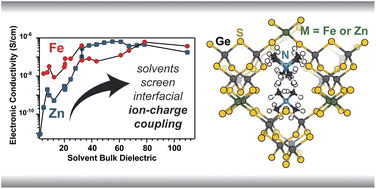
Chem. Sci., 2022,13, 12747-12759
https://doi.org/10.1039/D2SC05090K
Non-directed Pd-catalysed electrooxidative olefination of arenes
The Fujiwara–Moritani reaction using electric current is a powerful tool for the olefination of arenes by Pd-catalysed C–H activation.
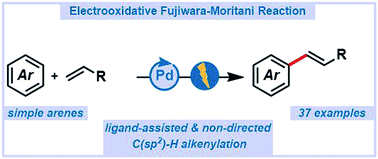
Chem. Sci., 2022,13, 9432-9439
https://doi.org/10.1039/D2SC03288K
Dual electrochemical and chemical control in atom transfer radical polymerization with copper electrodes
The use of a Cu cathode in eATRP allows exploiting the synergistic effect between electrochemical and chemical stimuli to halt or accelerate polymerizations, reduce energy consumption and achieve control in challenging systems.

Chem. Sci., 2022,13, 6008-6018
https://doi.org/10.1039/D2SC01982E
Electro-oxidation of amino-functionalized multiwalled carbon nanotubes
A new and generic approach to the study of the oxidation of different forms of CNTs is found by using quantitative single entity and ensemble electrochemistry measurements.

Chem. Sci., 2022,13, 1355-1366
https://doi.org/10.1039/D1SC06122D
Enantioselective palladaelectro-catalyzed C–H olefinations and allylations for N–C axial chirality
Enantioselective palladaelectro-catalyzed C–H alkenylations and allylations were achieved by the means of an easily-accessible amino acid for the synthesis of N–C axially chiral indole biaryls.
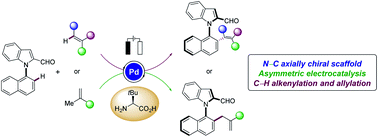
Chem. Sci., 2021,12, 14182-14188
https://doi.org/10.1039/D1SC04687J
Electrochemistry, ion adsorption and dynamics in the double layer: a study of NaCl(aq) on graphite
CμMD reveals multi-layer electrolyte screening in the double layer beyond 0.6 M, which affects ion activities, speciation and mobility; asymmetric charge screening explains concentration dependent changes to electrochemical properties.

Chem. Sci., 2021,12, 11166-11180
https://doi.org/10.1039/D1SC02289J
Electrochemical impedance spectroscopy of PEM fuel cells at low hydrogen partial pressures: efficient cell tests for mass production
Electrochemical impedance spectroscopy of PEM fuel cells under varying hydrogen concentrations reveals the origins of the correlation between hydrogen partial pressure and fuel cell performance.

Ind. Chem. Mater., 2024,2, 132-140
https://doi.org/10.1039/D3IM00075C
Electrochemical recovery of Pt/C electrocatalyst: optimization of the potential range on the leaching process and application to an aged MEA
An optimized potential window for efficient platinum electrodissolution, the first step of a Pt recycling process, is proposed.
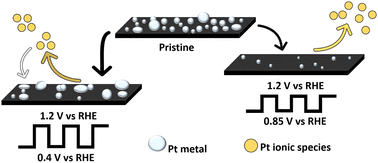
Ind. Chem. Mater., 2024,2, 118-131
https://doi.org/10.1039/D3IM00085K
Synergistic functionalization of poly(p-terphenyl isatin) anion exchange membrane with quaternary ammonium and piperidine cations for fuel cells
Quaternary ammonium cation and piperidine cation cooperate to further improve the performance of the anion exchange membrane.
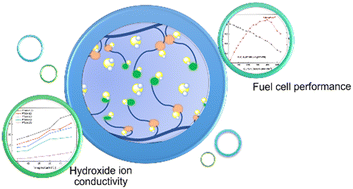
Ind. Chem. Mater., 2024,2, 141-153
https://doi.org/10.1039/D3IM00077J
Effect of the calcination temperature on the characteristics of Ni/Fe-oxide electrocatalysts for application in anion exchange membrane electrolysers
Ni–Fe oxides were prepared by the oxalate pathway and heat-treated at three different temperatures. An outstanding performance was achieved in AEMWE by NiFeOx 450-anode-based MEA.

Ind. Chem. Mater., 2023,1, 553-562
https://doi.org/10.1039/D3IM00065F
Unveiling the particle size effect and surface reactivity of Pt/C nanoparticles for ammonia electrooxidation using in situ infrared spectroscopy
In situ PM-IRRAS provides information about the reaction products of ammonia electrooxidation on the surface of Pt/C nanoparticles and in the bulk of electrolyte.
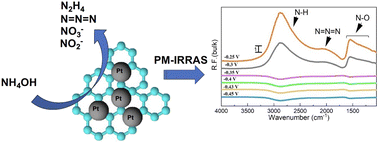
Ind. Chem. Mater., 2023,1, 542-552
https://doi.org/10.1039/D3IM00063J
Highly active ZIF-8@CNT composite catalysts as cathode materials for anion exchange membrane fuel cells
This study investigates the oxygen reduction reaction activity of transition-metal-doped ZIF-8 and carbon-nanotube-based composite catalysts in alkaline media and their performance in anion-exchange membrane fuel cells using an Aemion+® 15 μm AEM.

Ind. Chem. Mater., 2023,1, 526-541
https://doi.org/10.1039/D3IM00081H
The effect of grafted alkyl side chains on the properties of poly(terphenyl piperidinium) based high temperature proton exchange membranes
New high-performance high temperature proton exchange membranes have been developed for fuel cell applications.
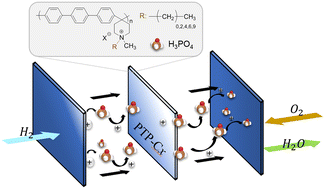
Ind. Chem. Mater., 2023,1, 516-525
https://doi.org/10.1039/D3IM00064H
Does the platinum-loading in proton-exchange membrane fuel cell cathodes influence the durability of the membrane-electrode assembly?
MEAs with various cathode Pt loadings were elaborated and aged using a multiple-stressor accelerated stress test (AST) in a segmented PEMFC.

Ind. Chem. Mater., 2023,1, 501-515
https://doi.org/10.1039/D3IM00059A
Tunable construction of CuS nanosheets@flower-like ZnCo-layered double hydroxide nanostructures for hybrid supercapacitors
CuS nanosheets@ZnCo-LDH nanoflower nanostructures are synthesized for hybrid supercapacitors.
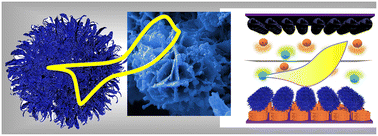
Ind. Chem. Mater., 2023,1, 443-457
https://doi.org/10.1039/D3IM00027C
Large-scale direct regeneration of LiFePO4@C based on spray drying
We present a scalable, cost-effective closed-loop regeneration process of spent LiFePO4, including homogenization, spray drying and sintering. The regenerated LiFePO4 exhibits excellent electrochemical properties.
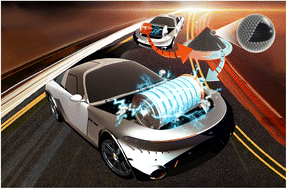
Ind. Chem. Mater., 2023,1, 254-261
https://doi.org/10.1039/D2IM00007E
Preparation of yolk–shell urchin-like porous Co3O4/NiO@C microspheres with excellent lithium storage performance
Yolk–shell urchin-like porous Co3O4/NiO@C microspheres were synthesized via solvothermal method and annealing treatment. A high reversible capacity of 502.7 mA h g−1 was maintained after 1000 cycles at 5 C, showing the long cycling stability.

Ind. Chem. Mater., 2023,1, 247-253
https://doi.org/10.1039/D2IM00017B
Effect of charge selective contacts on the quasi Fermi level splitting of CuGa3Se5 thin film photocathodes for hydrogen evolution and methylviologen reduction
The defect-copper chalcopyrite CuGa3Se5 is a promising photocathode material for solar hydrogen generation. Here we assess its performance with photoelectrochemical measurements and vibrating Kelvin probe surface photovoltage spectroscopy.

EES Catal., 2023,1, 74-83
https://doi.org/10.1039/D2EY00062H
Direct carbonate electrolysis into pure syngas
In a direct carbonate electrolysis system, a CO2 diffusion layer enabled the production of CO-rich syngas.
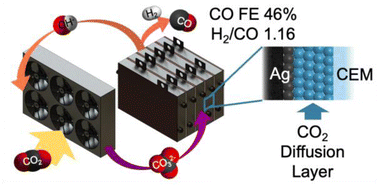
EES Catal., 2023,1, 54-61
https://doi.org/10.1039/D2EY00046F
A MnOx–graphitic carbon composite from CO2 for sustainable Li-ion battery anodes
Molten salt CO2 capture and electrochemical transformation (MSCC-ET) has been proposed as a sustainable synthetic method for Mn nanocrystalline inclusions in a graphitic matrix, which paves the way to new methods to produce composite materials.
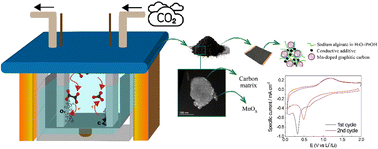
Mater. Adv., 2022,3, 7087-7097
https://doi.org/10.1039/D2MA00583B
Metal-free polypeptide redox flow batteries
Metal-free redox flow batteries with TEMPO-based polypeptide catholytes and viologen-based polypeptide anolytes were demonstrated. Post-cycling analysis indicated the main source of capacity fade was degradation of the redox-active pendant groups.
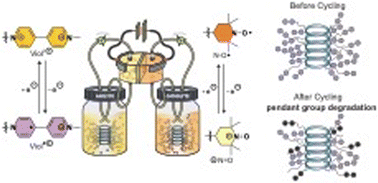
Mater. Adv., 2022,3, 6558-6565
https://doi.org/10.1039/D2MA00498D
Learning the laws of lithium-ion transport in electrolytes using symbolic regression
Machine learning to discover equations: we train a symbolic regression model on high-throughput experimental data and find an explainable, simple and accurate analytical expression predicting the ionic conductivity of a Li-ion battery electrolyte.
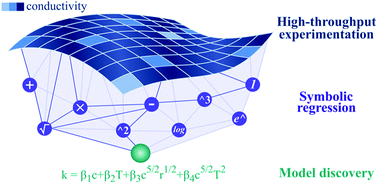
Digital Discovery, 2022,1, 440-447
https://doi.org/10.1039/D2DD00027J
Nickel selenide as an efficient electrocatalyst for selective reduction of carbon dioxide to carbon-rich products
NiSe2 nanostructures exhibit highly efficient electrocatalytic activity for CO2 reduction, producing carbon-rich products with high selectivity and faradaic efficiency at lower applied potential and less energy expense.
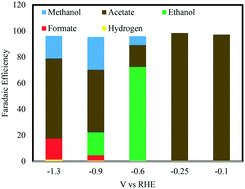
Catal. Sci. Technol., 2022,12, 4727-4739
https://doi.org/10.1039/D2CY00583B
Thermally fabricated cobalt telluride in nitrogen-rich carbon dodecahedra as high-rate potassium and sodium ion battery anodes
Cobalt telluride anchored to nitrogen-rich carbon dodecahedra (CoTe@NCD) as high-rate potassium and sodium ion battery anodes.
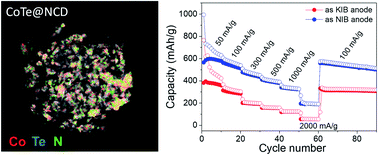
Sustainable Energy Fuels, 2022,6, 3582-3590
https://doi.org/10.1039/D2SE00267A
Pd doped carbon nitride (Pd-g-C3N4): an efficient photocatalyst for hydrogenation via an Al–H2O system and an electrocatalyst towards overall water splitting
A straightforward and mild protocol for photochemical in situ selective hydrogenation is described via an Al–H2O system as a hydrogen donor and deploying a Pd-g-C3N4 photocatalyst under visible light and ambient conditions.

Green Chem., 2022,24, 5535-5546
https://doi.org/10.1039/D2GC00801G
A doping element improving the properties of catalysis: in situ Raman spectroscopy insights into Mn-doped NiMn layered double hydroxide for the urea oxidation reaction
Potential dependent in situ Raman spectra confirm that Mn doping enables a negative shift in Ni(II) oxidation onset potential.
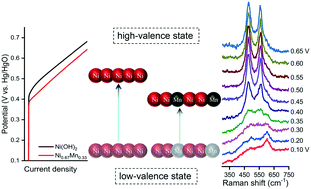
Catal. Sci. Technol., 2022,12, 4471-4485
https://doi.org/10.1039/D2CY00308B
Tuning aprotic solvent properties with long alkyl chain ionic liquid for lithium-based electrolytes
Lithium–metal batteries, such as Li–O2, are some of the most promising candidates for high-performance energy storage applications, however, their performance is still limited by the electrolyte instability.
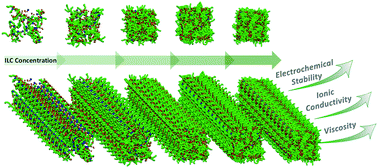
J. Mater. Chem. A, 2022,10, 11684-11701
https://doi.org/10.1039/D1TA10592B
Sustainable lithium-ion batteries based on metal-free tannery waste biochar
In the present study we tackle the sustainable batteries topic by proposing a tannery-based high performance and eco-friendly battery anode.

Green Chem., 2022,24, 4119-4129
https://doi.org/10.1039/D1GC04772H
Improved electrochemical performance and solid electrolyte interphase properties of electrolytes based on lithium bis(fluorosulfonyl)imide for high content silicon anodes
Lithiation of silicon in an LiFSI electrolyte results in a bilayer SEI, with an inner, inorganic layer, and an outer, organic. This SEI is more conductive, flexible and homogeneous compared to the SEI formed in an LiPF6 electrolyte.
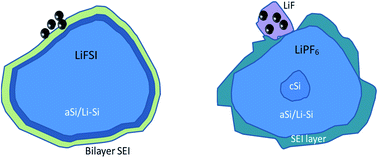
RSC Adv., 2022,12, 12517-12530
https://doi.org/10.1039/D2RA01233B
Hydrated eutectic electrolytes for high-performance Mg-ion batteries
A hydrated eutectic electrolyte with 3D percolating hydrogen bond network is designed for high-performance aqueous Mg-ion batteries.

Energy Environ. Sci., 2022,15, 1282-1292
https://doi.org/10.1039/D1EE03691B
Synergistic effect between PPy:PSS copolymers and biomass-derived activated carbons: a simple strategy for designing sustainable high-performance Li–S batteries
A synergistic combination between a biomass carbon derived from avocado seeds and a conductive copolymer has been employed to obtain high-energy and sustainable lithium–sulfur batteries.
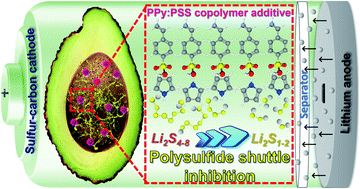
Sustainable Energy Fuels, 2022,6, 1568-1586
https://doi.org/10.1039/D1SE02052H
Nanosized high entropy spinel oxide (FeCoNiCrMn)3O4 as a highly active and ultra-stable electrocatalyst for the oxygen evolution reaction
High-entropy oxides (HEOs) with a multi-component single-phase structure are considered as promising electrocatalysts for the oxygen evolution reaction due to their good catalytic activity and tailorable electrochemical properties.
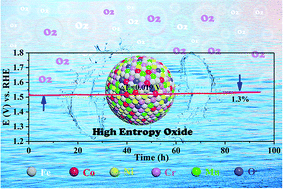
Sustainable Energy Fuels, 2022,6, 1479-1488
https://doi.org/10.1039/D1SE02038B
Electrochemically activated Co-Prussian blue analogue derived amorphous CoB nanostructures: an efficient electrocatalyst for the oxygen evolution reaction
A series of cobalt borides (CoBs) have been prepared by reducing the Co-PBA with NaBH4 coupled with annealing in the temperature range of 300 °C to 650 °C. After electrochemical activation in alkaline medium, CoB@300 catalyses the OER efficiently.

Dalton Trans., 2022,51, 2782-2788
https://doi.org/10.1039/D1DT03947D
About this collection
The broad topic of electrochemistry and electrochemical engineering is central to the study of energy conversion and storage processes, and plays a crucial role in solving global challenges. Two examples include improving lithium-based battery technology and developing alternative technologies, and the design and synthesis of electrocatalysts for fuel cells and water splitting.
This collection showcases some of the cutting-edge research published in RSC journals, from fundamental papers improving our understanding of electrochemistry and electrocatalytic processes, to the design, engineering, and performance analysis of batteries, fuel cells, and supercapacitors.
What do you envision to be the next frontier in electrochemistry and electrochemical engineering? If you’re working at the forefront of this research area, we welcome you to submit your next paper to one of our energy journals.